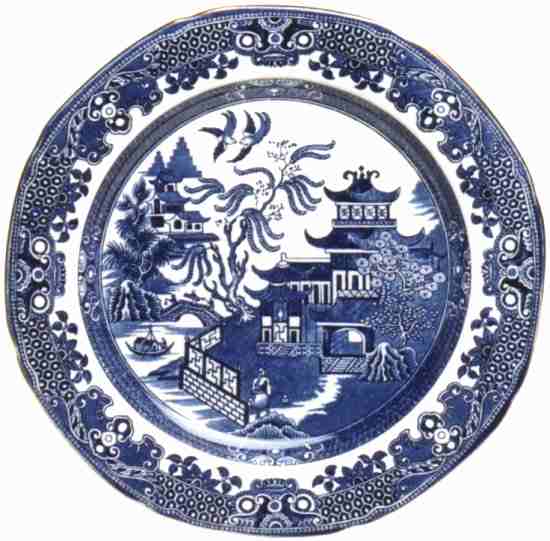e.g. Nyngan
Here's a learning map (above) from a sequence of lessons at Nyngan Public, in a Stage 3 class. The non-Aboriginal teacher is very comfortable with working with Indigenous knowledge in content as well as pedagogy. She says this is because she was raised in Aboriginal communities with access to Wiradjuri language and culture.
However, another teacher at the school shows that it is not necessary to have this background in order to engage with Aboriginal knowledge as a non-Aboriginal person. She did a unit on the Willow Pattern (English Plate design with Chinese story) as a story map, and then followed this up with a study of the Australian equivalent story of "Wattle and Acacia". Now she is looking at creating a story map with students for "Rabbit Proof Fence". Here's a picture of the Willow Pattern plate below. The Chinese story has similar themes to Aboriginal Dreaming stories, such as forbidden love, pursuit of wrongdoers, and transformation.
Another teacher in kinder also tried learning maps with her class. She got students to do their life-stories as visual journey maps. She did one to show her own life story first, as a model text (deconstruct/reconstruct way). She reported that the activity raised student engagement and higher order thinking for Aboriginal and non-Aboriginal students alike. However, she also added that Aboriginal students were particularly advantaged in this activity, showing an extraordinarily high degree of detail and sophistication in their journey maps. The teacher said she could see how this was such a strong Aboriginal way of learning, from the way her Aboriginal students seemed to organise memorised data so well according to place and visual cues. All the students' oral explanations of their maps were reported to be fluent and well-structured.
Two classes in Stage 2 are looking at procedural texts, and referring to a learning map for the texts. This is in the shape of a tree with steps cut into it.
Another teacher at Nyngan is focusing on the deconstruct/reconstruct element to explicitly reframe her scaffolding processes as an Aboriginal way of learning. She says that the 8way framework is no more difficult to implement than any other pedagogy framework (e.g. six thinking hats, etc.), and that there should be no barriers to any teacher implementing it in the classroom. Her process for her own induction is to read about it, talk to others about it, try it out and then implement it (the same as for any other framework).
There's a lot more that they are doing at Nyngan, but we'll leave that for them to post in this page and in the discussion.

